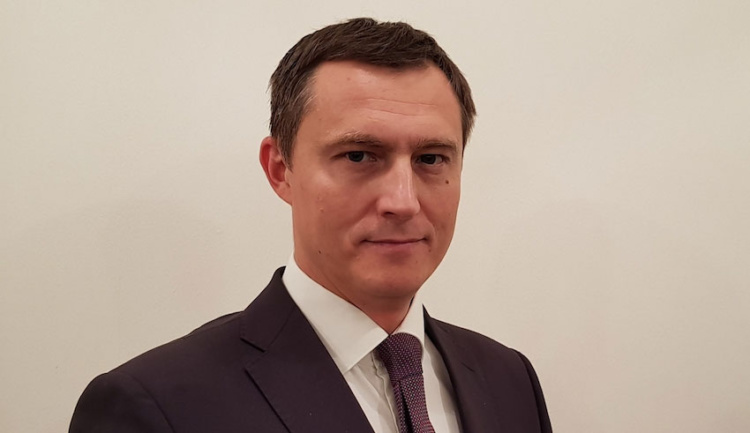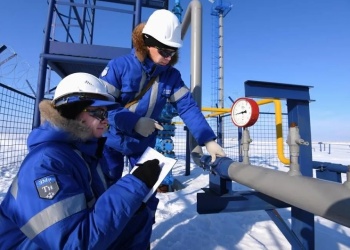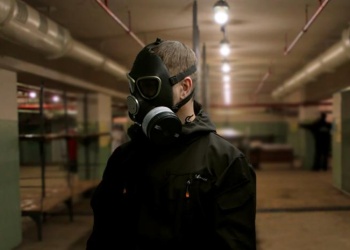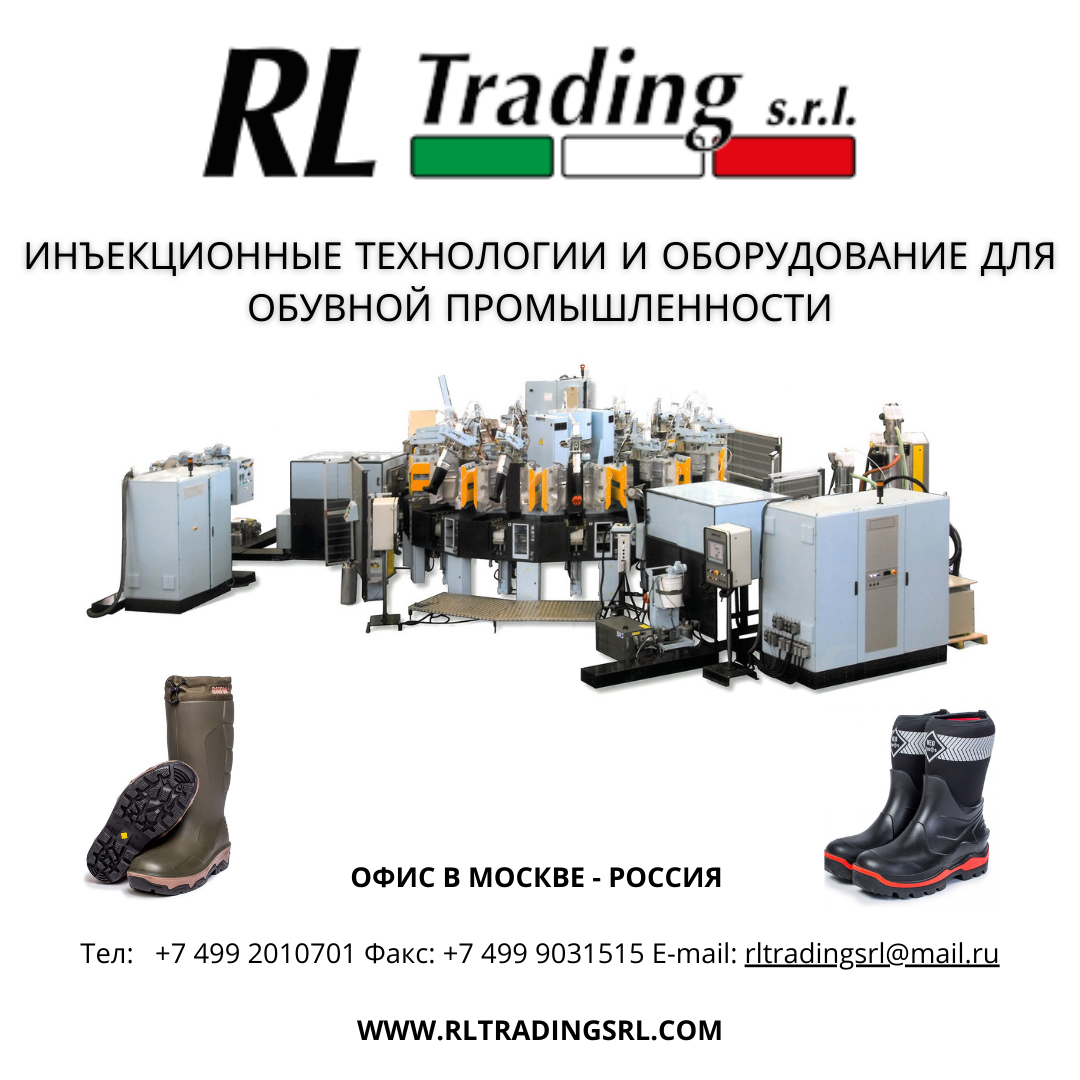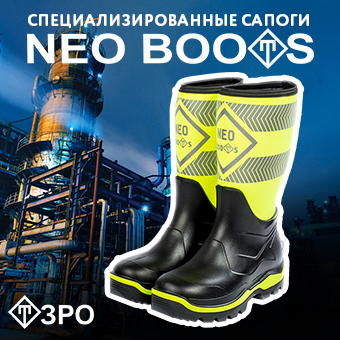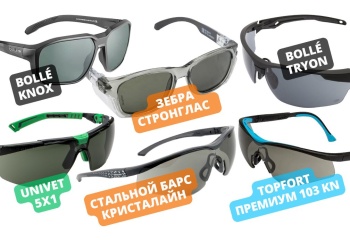A year ago, the Russian division of the Finnish group Lindström, specializing in the rental of textiles, got a new Vice-President. It was Nikolay Stotyka, who had earlier worked in the management of Sodexo Company. What has been achieved during this year, what goals has Lindström set for itself and how the market for rental workwear in Russia is developing in general Nikolay told in an exclusive interview to Getsiz.ru.
Nikolai, good afternoon.
Hello.
A year has passed since you started at Lindström. How is it going? It’s a new business after all, and quite specific one — rental of workwear.
My experience at Sodexo was quite extensive. I started with catering. Five years before Lindström I worked mainly with technical maintenance. I had to do with factories and business centers. Management and business have basic principles in any field of activity but, of course, one cannot do without knowledge of the details. As of today there are some details of textile production that I define for myself as a field of studying, but in general the principle of work is clear. In addition Lindström has a well-established procedure of getting to know the business. I personally worked in all areas of service producing industries. I traveled to all our service centers, including the most distant one in Novosibirsk. Talked to all managers, there are about 70 of them and worked in Helsinki. This is the Lindström principle. It gives a proper insight into what the company is doing.
That is, there was no stress when you changed the company?
The goal of Lindström is to be the leader on the Russian market, just like the case with Sodexo. Again, here and there it is B2B, sales of services. So no, there was not much stress changing the company. The main thing that had to be taken into account is the criticality of planning. In the leasing business it is much higher than in catering, which in principle is well predictable. Textiles often involve the development of individual collections and making of clothing for certain conditions, which takes much more time. To provide the customer with the right amount of products at the right time, it is necessary to clearly understand what volumes will be needed and when. The depth and accuracy of planning is critical in this case.
How would you briefly describe the essence of workwear rental and its benefits?
The essence of the service is to eliminate the headache which is related to the purchase and maintenance of workwear. This is a problem of any manufacturing facility. Employees come and go, their number adapts to the growth and decline of the business. The employer himself has to buy, store, maintain, handle and change workwear. Our service requires the company’s involvement at the level of “provide information about personnel and changes that occur”. We do the rest.
Is the service intended only for big business? Can workwear rental be of interest to an enterprise employing, say, about 50 people?
We work with different segments: from car service centers with a dozen workers to huge steel companies employing tens of thousands. Moreover service companies and small business make up 39 percent of our customers in Russia.
Take a business with several thousand employees. Le’s say a production plant of car components. How would you convince the owner that workwear rental is beneficial for the business?
The approach is always individual. If it is a plant with a thousand people, then first we audit the current processes: we determine expenses, check the stock, which often lies dead and look at what happens with washing: whether it is done or not. Then we calculate the related losses incurred by this company. Without strict control employees often wash their workwear themselves. One thing when we are talking food industry, there is not so much dirt accumulation. Another, if we are talking about processes involving use of grease and lubricants and where there is a lot of dust. At the end of the shift you can put your coverall in a corner and it will stand by itself. At such workplaces workers either try to wash their garments at home, causing discontent of their families, or change them more often. At «dirty» workplaces employees according to the norms get one set of workwear issued per year. In fact, they need three or four sets.
Do the companies pay for the assessment?
No, this is our expert support. In many regions where we develop the service, we have to educate clients on how it works and explain why it is better to use it. We have cases when customers’ current workwear expenses increased 2-2.5 times, but in return they received full service: employees hand in the garments for washing, they do not have to take them home and receive a clean set for the next shift. There are different cases. Take car services — car washes, car repairs, etc. What usually happens: the owner buys the cheapest camouflage suits. The workers wear them for a month at most. They get soaked with oil. Then they are thrown away and the owner purchases new ones. In this case, our service is cheaper by a third.
It is important to understand that the Lindström service is not just textiles and laundry. It is a package approach. It involves the choice of fabric, the way we make clothes, what laundry detergent we use and under what temperature conditions and for how long we wash the clothes. Sometimes working out an individual program takes about a month.
Do I understand correctly that Lindström rents only workwear of its own production?
Sometimes we buy products from third-party companies. Usually we buy balaclavas and PPE. Regarding workwear, we insist in principle that it should be of our own manufacture. The norms of issue suggest that three sets of workwear must serve three years. During this time, each set goes through approximately 50 machine wash cycles. We are confident that our workwear can withstand 60-70 washing cycles retaining protective properties.
Some manufacturers of workwear provide rental service at cost. Their task is not to capitalize on the service, but to ensure capacity utilization. And your case we have the opposite situation: the main business is rental, and production is adapted to it.
Here is the fundamental difference. Sometimes competitors, hiding behind rental services, sell clothes and then maintain them, calling it outsourcing. If I am a manufacturer, it is important for me to utilize production capacities and sell. And the sooner my product becomes unfit for use, the faster I will sell more if I can get the customers interested in its original properties. Lindström is distinguished by the care for workwear. Our goal is to make our garments work as long as possible.
Where is the Lindström textile production located?
We are ready to show any client any process from accepting workwear to water discharge.
In Europe, China and Madagascar. In Russia this year we are launching a partnership with a local manufacturer, a St. Petersburg company “Mirra”. Lindström started in Russia from St. Petersburg, which is geographically closer to Finland. Now the focus is shifting to Moscow, but St. Petersburg is still our main division. We have been looking for a partner for about three years. The main criteria were the quality of production and price. As for the fabrics, “Mirra” will buy them from the same manufacturers as we do. By 2019 we plan to switch to Russian fabrics. We consider “Tchaikovsky Textile” and “Textime” as our potential partners. «Mirra» is ready to start tailoring our garments. The most important thing that Mirra’s workwear must comply with GOST norms in order to be able to participate in public tenders.
When are you planning to launch production in Russia?
The first deliveries will be this year. We won’t be able to transfer all orders to Russia, but this is a part of a large-scale transition. Protectionism as a component of import substitution policy exists and acts. We are faced with it as a representative office of a foreign company.
What part of the Lindström workwear in Russia will be produced by Mirra?
Within two to three years must reach about 30 percent.
What is Lindström’s share of the Russian market for workwear rental?
The entire workwear and PPE market for 2018 is estimated at 150 billion rubles. According to our data, workwear rental accounts for less than 2 percent of the total market today. The share of Lindström in these 2 percent is about 63-67 percent.
Where is the largest Lindstrom service site in Russia?
It is located In St. Petersburg region, in Pushkin. There are both clothes and carpet service sites, and the first clean room in Russia, which opened at the end of last year. Clean room is a separate laundry room protected from moisture and dust. The room is completely sealed, even the loading of clothes occurs through special machines. The whole process is based on GMP (Good Manufacturing Practice) technology, which implies full control and the absence of any foreign particles. This is an ideal production unit.
Who are your clean room customers?
In Russia clean rooms are in demand in pharmaceuticals and medicine. We work with the pharmaceutical company GEROPHARM. Negotiations are under way with several other manufacturers in St. Petersburg, Perm and Yekaterinburg.
You mentioned pharmaceuticals and automotive business. What about other industries?
The first segment is steel production, works of the United Metallurgical Company in Vyksa, Chusovoy and Blagoveshchensk, then the enterprises of the United Shipbuilding Corporation in St. Petersburg and “Russian Helicopters” in Yekaterinburg. The second segment is food industry: Danone, Dymov, “Russkoye Pole”. Also “Retail City”, “Dixie”, pilot project with “Leroy Merlin” and cosmetic stores — “Rive Gauche”.
What is the volume of Russian sales in 2017 and what do you expect from 2018?
Our annual turnover in workwear, excluding carpets and hotel services, is 1.2 billion rubles (ca. 16 million Euro), which is 56% of the total turnover. In general Lindström has about 25 thousand clients in all services, in clothes — a little more than 10 thousand. The growth of the workwear segment this year is close to 10%, which is lower than planned though. The reason for that was an increase in costs. The Euro exchange rate was unfavorable and the fabrics prices were tied to Euro. This affected the sales and the overall change in approach. Wearetryingtogetmoreflexible.
… either special attention, or special checks. Everything is in the usual mode of operation of a foreign company in Russia.
Historically the Finnish business is overregulated. This is a feature of the mentality plus a lot of experience: the company this year is 170 years old. The old approach assumes that there are instructions for everything. When we developed as a company that provided workwear, mended it, washed it and nothing more, it worked perfectly well securing consistency of quality. If we talk growth, we have to consider the special needs of customers and conditions of their production. Our instructions stop working in non-standard situations, our rigidity which used to ensure stability, now hampers the development. This is what underlies the change in management at all levels. This is a global strategy and my role is to be its guide in Russia, to adapt to Russian realities, to increase the turnover and to achieve Lindström’s recognition as the leading service company.
Does Russia have a special place in the group’s plans?
Yes. Lindström operates in 24 countries of Europe and Asia. Finland today accounts for 56 percent of the group’s total turnover. It is the leader in all areas. Russia is on the second place. The Russia’s turnover in the group is approaching 10 percent, and we plan that it will grow. Despite the fact that the Baltic States and Eastern Europe are actively developing, the growth rate of Lindström in Russia in the five-year vision is higher: about 13-15 percent annually. There are prerequisites for this: the total market capacity and today’s coverage of rental services. We offer something new, a really convenient service and try to make it even better, for example, we introduce RFID tags for data processing and control.
Can you dwell on this a bit more?
Today, various methods of identifying garments are used: from branding a personnel number by chemicals (this is known even from Soviet time), to tags and bar codes. Modern solution is a Radio Frequency ID tag, a chip with a built-in antenna. It is possible to download a code into a radio tag and identify every piece of clothing by it: when it was produced, put into operation and how many times it has been washed and mended. All information is stored in the system. In conjunction with the list of employees, this allows to draw conclusions as to which division’s workwear was washed more often, where orderliness is better. Our service implies a responsible attitude to the implementation of simple rules. Clothing is a PPE like goggles or a safety helmet, in the sense that it also designed to protect health. One of the difficulties in implementing workwear rental is a lack of awareness about how the service works. We focus on this at a start-up stage: we train workers, print reminders, place information materials on lockers and hold lectures on OS&H.
You have ambitious plans for Russia, but given the current political situation, is there no fear that at some point of time you will have to curtail your business? Foreign companies are under pressure.
We do not experience this: either special attention, or special checks. Everything is in the usual mode of operation of a foreign company in Russia. There are cases when someone tries to designate some additional expectations in a tender, but we exit such tenders right away. We have normal professional relations with the regulatory authorities and we undergo all regular inspections. Everyone sees that Lindström pays serious attention to the licensing of hazardous facilities, the organization of labor and occupational safety. We are ready to show any client any process from accepting workwear to water discharge. The only thing we have to face is the inability to work with state-owned companies. As a result we have no workwear collections, for example, for the oil industry. There are some pilot projects but before the issue of local manufacture is settled it won’t be of immediate interest.
Who do you consider to be your main competitors in Russia?
In Europe, according to various estimates, 30 — 40 percent of companies use rental workwear.
Our main competitor on the Russian market is a Moscow Company «Rentex». It was purchased by “Blesk InCare” in 2012 and now it is competing with us in carpets and workwear business. Then there are “Bela” and “Cotton Way”. If we talk about clean rooms, then today it is Berendsen, a European Company, which last year was acquired by our international competitor Elis. Berendsen has own production in Moscow. They are actively working with the pharmaceutical cluster in the Kaluga region.
Do you rent laundriesor use your own equipment?
We rent premises and have a serious approach to it. We look at the location and gas availability. We start working with electricity, and then with the growth of volumes we switch to gas. But the equipment always belongs to us. We use washing machines and dryers from Kannegiesser and Electrolux. Another partner we have is Aminodan. They help us with sewage treatment equipment. Over the past few decades, we have perfectly mastered the technology of scaling. Production sites are quite mobile and can be moved within a few days.
What about the motor pool for transporting textiles? Isitalsoyours?
Deliveries are done by our partners. Again, they must meet our requirements, which include vehicle branding, working in uniform and service. Clients see the drivers every day, they not only bring and pick up the cargo, but sometimes they have to answer questions like “why didn’t you deliver this and that to me”. Drivers are also the face of the company, and we experience difficulties in this regard, especially in the central region. We have to make audits and arrange joint visits. An additional check point, as I said before, is that every manager if it is assumed that he or she will manage Lindström’s business at any level, must go through, includes delivery. Understanding how the process is built from the first request to the billing helps to make work more efficient.
If you look globally how does Russian market of rental workwear differ from the Western one?
The main difference is in the popularity of the service. The European market of workwear rental is estimated at approximately 13 billion Euros, while the Russian market at 2 million. In Europe, according to various estimates, about 30 — 40 percent of companies use rental workwear. Therefore in European countries we see serious competition and an even price level. In Europe they have long been competing about quality of service. Here everything is built around the price, and only then people start thinking about the quality. There is also a legislative difference. In Russia, workwear sorts under PPE, and the workwear market is a part of the PPE market. This reflects in customer expectations. Russian companies want an integrated approach, that is, that we should wash shoes, provide PPE and solutions that will integrate accounting and statistics into their systems — SAP, 1C.
Do you meet them halfway?
This is a part of our strategy. We are developing an integration product that will allow the Lindström system to communicate with customer accounting systems. Of the ten of our service centers, three are already working with automated accounting.
What about PPE?
There are several contracts where we provide comprehensive services. It is about workwear and full administration of PPE: identifying needs and issuing PPE with a record. There is a pilot project in Finland: PPE as a separate service, while in Russia we are still thinking. Lindström does not produce PPE, therefore we offer them only as part of a comprehensive solution. We do not manufacture safety footwear either, but we think about how to maintain footwear: using steam or infrared treatment, maybe even washing.
What, in your opinion, hinders the development of rental workwear service in Russia?
The development of rental service is directly impaired by inability to get deductions from the Social Insurance Fund.
Probably, not only the rental of workwear but working with PPE in general is hindered by the sluggishness of the legislation. A direct responsibility of the employer and personal signature of the employee are required. This is a serious barrier to new technologies, but I am glad that there have appeared companies that promote the new technologies, including vending. We are ready to join the process at the expert level. I mean participation in round tables, forums and discussion. The development of rental service is directly impaired by inability to obtain deductions for FSS (Social Insurance Fund). Legislation simply does not provide for such an opportunity. Although the forecast here is positive: as far as I know, a Bill is being prepared on this issue.
In what way is Lindström different from Russian companies? What do you do that they do not?
First, we strive to be a service-minded company, that is, we try to take all decisions from the point of view of the client. Lindström really cares about every piece of clothing: how to fix it, wash it, whether it is “killed” by chemicals or not. This happens at all levels — from operators to top managers. The second difference is our ethical principles: clean business and full compliance with the law. Yes, it is difficult, but real, I can say on the background of 14 years’ experience in Sodexo and a year in Lindström.
Does this approach apply to environmental protection?
Environmental cleanliness is a high priority for Lindström. We use energy recovery: after washing, before discharging the water, we take its heat to warm up the next charge of water. We apply preliminary cleaning in intermediate rinsing: water sometimes goes through 2-3 cycles during one wash. Before discharging we clean the water with the help of special equipment and chemical agents in order to bind and remove all the hazardous components and tensides.
There is a video where our regional director, construction director and facility manager drink the water that comes out after cleaning. Not that we recommend it, but it is absolutely safe to discharge used water into a normal sewer. This is the standard we adhere to.
And how do you get rid of used-uptextiles?
Last year we disposed of about 1.4 thousand tons of textiles, of which 179 tons in Russia. We burn discarded clothes in Russia. This, of course, is not the best solution. In Finland 87 percent of worked out textiles are recycled and the target is 90 percent. On average in the Lindström group we recycle about 70 percent, in Russia – 30 percent. But again, in Russia the maximum that can be done is to burn discarded clothes. Sending textiles for recycling to another country is economically irrational.
Why don’t you arrange recycling in Russia?
We do not do it ourselves. In Europe we work with partners. In Finland there are several institutes. At home Lindström began with the mechanical processing of used textiles. The processed material was used as filter media. Now a chemical dissolution is used. It makes it possible to extract cellulose from which lyocell fibers are then obtained. In St. Petersburg we have a partner in the recycling of used carpets. They make rubber products like mudguards, crumb for stuffing sports equipment etc. out of used-up carpets. This company recycles all our carpets. Unfortunately this is an isolated case. In order for the situation to change across the country, legislative attention is required. As always, a carrot and a stick are needed: preferences for those who are ahead, and penalties for those who do not follow at least basic principles. I am sure that recycling can be an excellent business. Europe has already proved it.
Let’s hope it would come true. Nikolay, thank you for the interesting story.
You are welcome. Till next time.



